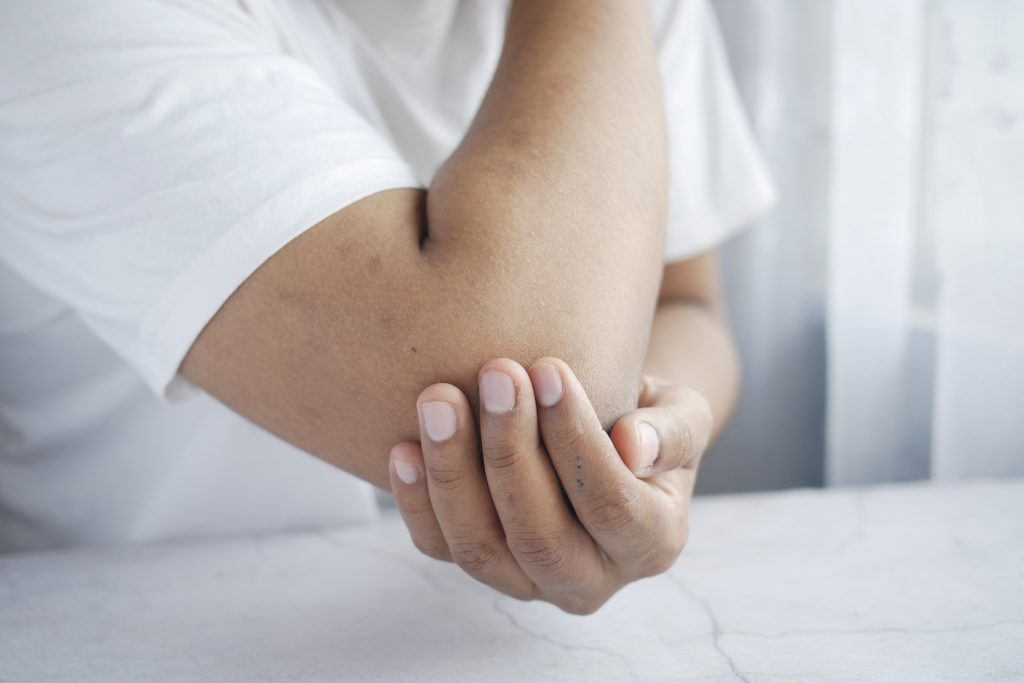Elbow
Help with tennis elbow, golfer's elbow, elbow pain
Dr. Radek Hart is an elbow specialist in Vienna. As an attending physician at the Floridsdorf Clinic with years of experience as an orthopedic surgeon and orthopedic surgeon, he has the expertise to best help you with your elbow injury.
Elbow injuries and overuse injuries can lead to severe pain and limited range of motion. Usually, elbow pain is successfully treated with conservative measures such as offloading, rest and immobilization. However, if these measures do not bring improvement over a longer period of time, surgery is a possible option to relieve the symptoms.
Elbow specialist Dr. Radek Hart can help you with the following conditions:
- Elbow stiffness
- Forearm rotational stiffness
- Elbow ligament injury and elbow instability
- Signs of wear and tear (osteoarthritis)
- Elbow malpositions (axis deviations)
- Tendon injury
- Rheumatism and other inflammatory diseases
- Dislocations and fractures
- poorly healed fractures (transpositions, grafts)
- orthopedic diseases (bone death, tumors, congenital diseases, cerebral palsy, free joint bodies, etc.)
- Tennis elbow
- Golfer's Elbow
- Nerve constriction syndrome - sulcus ulnaris syndrome (cubital tunnel syndrome)
- Bursitis
I also specialize in intra-articular reconstructions of the elbow joint and arthroscopy of the elbow.
You have pain in the elbow and do not know exactly what diagnosis to expect? Contact me and make an appointment in my office! I will work with you to find the most appropriate therapy for you.
What is the elbow joint - evolution and development
The elbow joint (lat. Articulatio cubiti) is the connection between the upper arm and lower arm bones and consists of three partial joints. The development of the elbow joint began 280 to 180 million years ago, when the first reptiles and mammals evolved.
The forearm was then only a torso used for crawling movements. Later, the demands on the lower humerus led to the formation of two massive pillars with a shallow groove and a small hump that developed on the upper ulna. This allowed for primitive upper arm forearm articulation and thus significant improvement in upper extremity motion as well as initial body uprighting with improved motion in the shoulder joint. First primordial apes existed 100 to 35 million years ago and adapted their upper limbs to organs capable of various grips and activities.
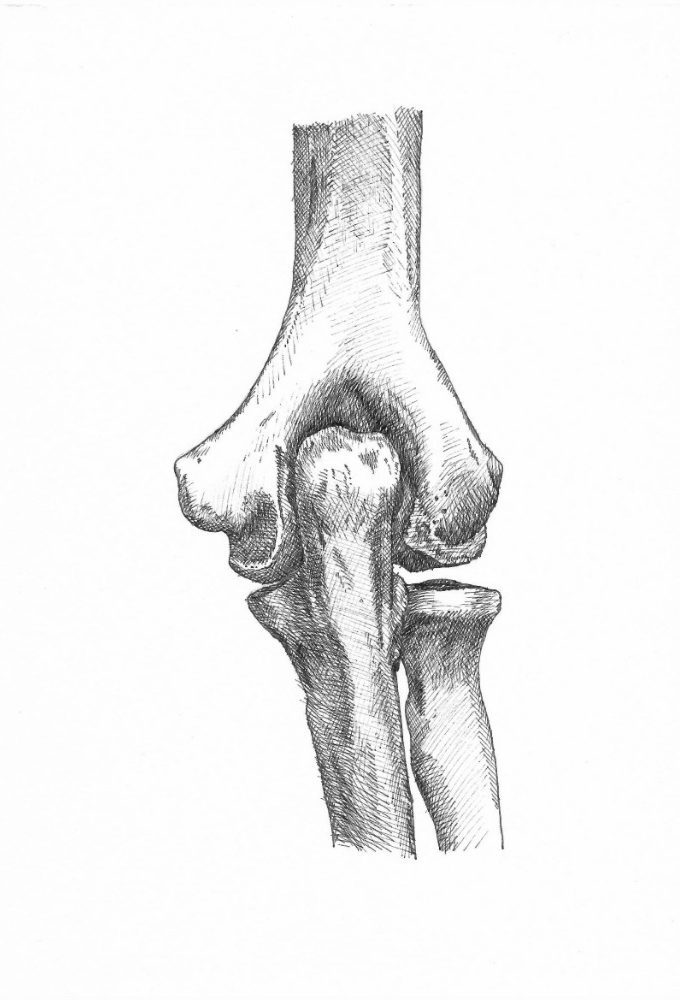
The upper ulna developed into a primitive groove and took on the role of a socket. The first “hominoids” 25-12 million years ago represented an already highly evolved group of primates. Their locomotion was dominated by pendular movements of the upper limbs. The lower end of the humerus became deeper and wider. There was significant stabilization of the humeral-forearm joint, particularly in terms of lateral stability. Its shape allowed a wide range of motion. The evolutionary split between “apes” and the first “humanoids” occurred 15 to 6 million years ago. Then followed the straightening of the body and the first walking only on the back legs, which allowed further development of the function and movement of the elbow joint area. The upper extremity was no longer weight-bearing, but was specialized for fine manipulations.
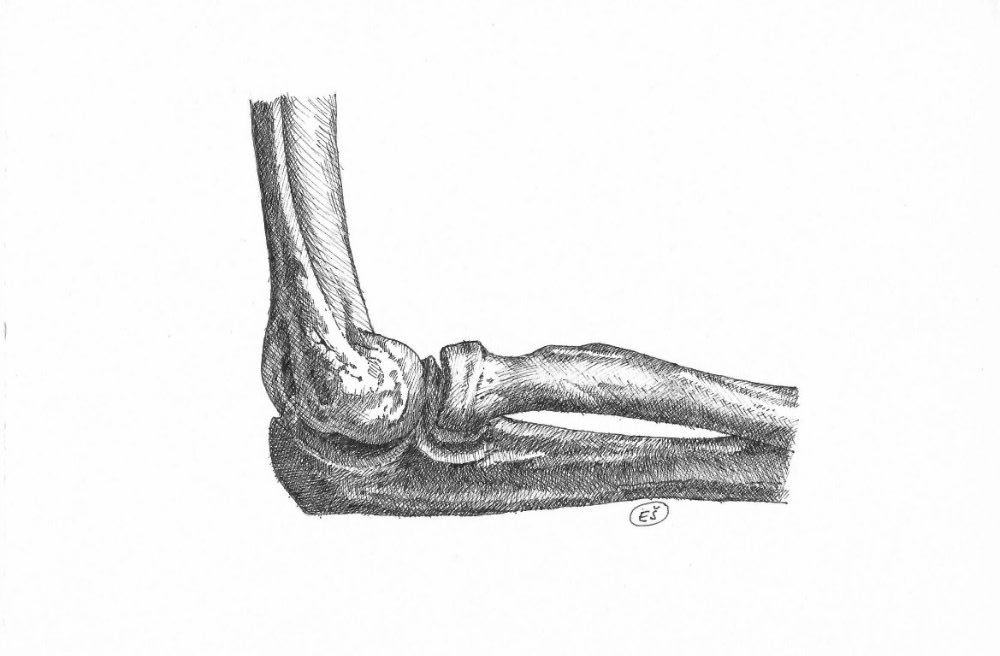
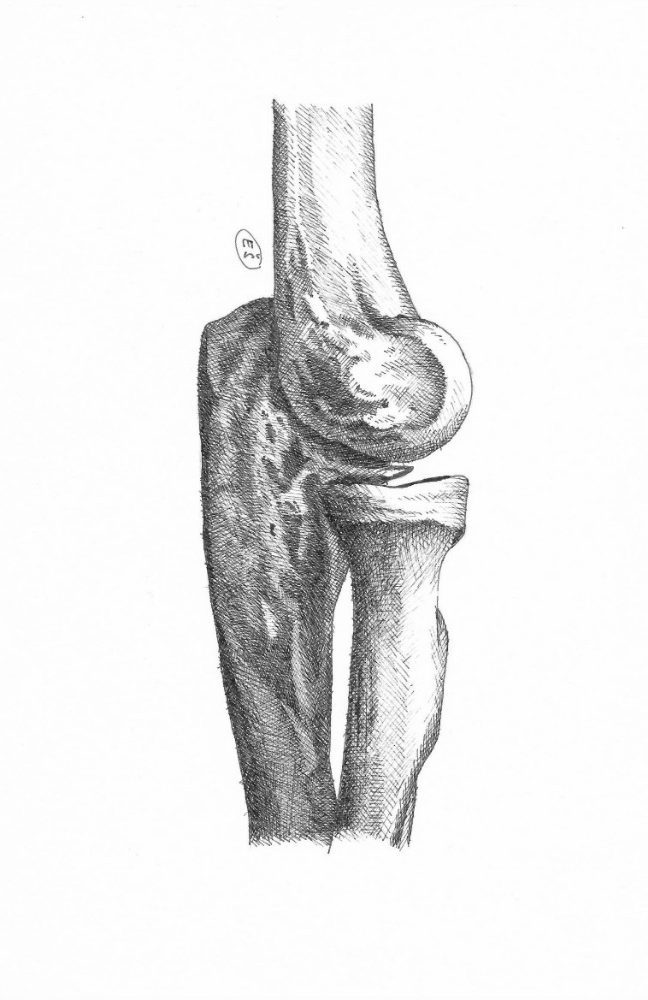
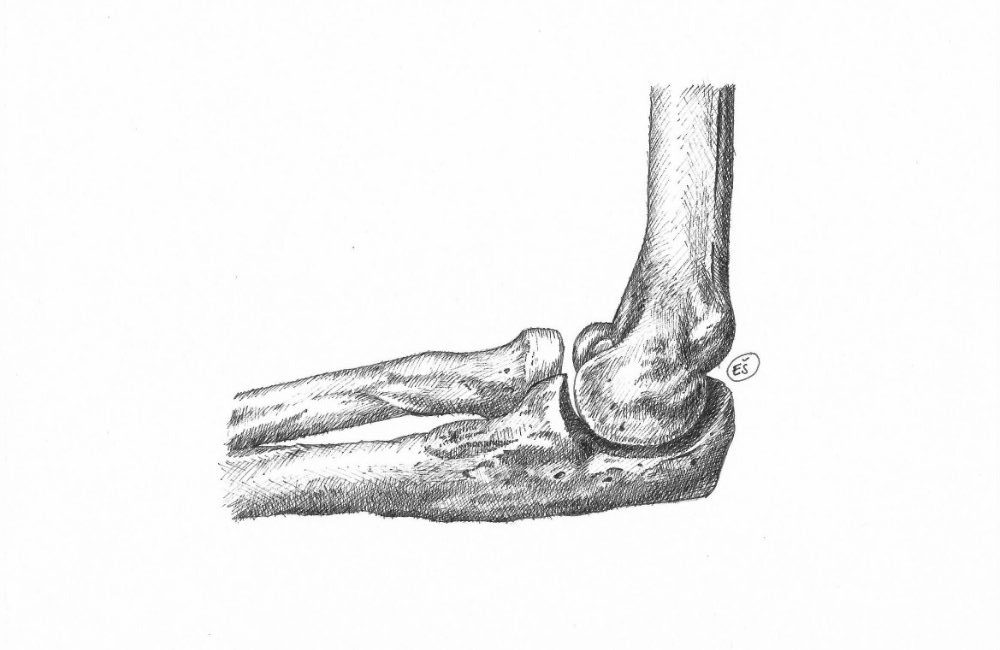
What is the function of the elbow joint?
The elbow joint therefore gradually developed into a biomechanically very complex joint consisting of three bones, reinforced by a large number of ligamentous structures and spanning a considerable number of muscles of the upper arm and forearm. Accuracy of hand placement in space is enabled by sophisticated elbow joint at every movement.
Thus, the function of the elbow joint, together with the shoulder, is to position the hand in space. Due to the large range of motion of the shoulder joint around all three axes, motion in the elbow joint is reduced – the elbow can move around two axes. The humeral-salivary joint and the superior-salivary-elbow joint allow rotational movements of the forearm, while flexion and extension occur at the humeral-salivary joint. From the above, it is evident that the elbow joint is a very complex and unique structure that has undergone a long evolution and is fundamentally different in many respects from other joints of the human body. What’s more, the forces acting on its joint surfaces exceed the body weight by up to seven times.
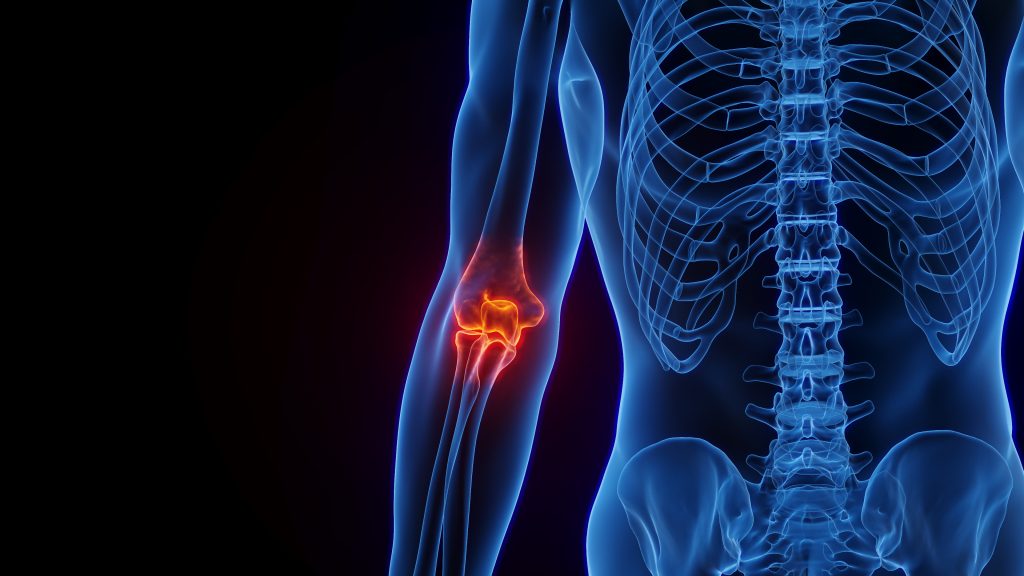
Treatment for injuries of the elbow
If an injury to the elbow joint occurs, reconstruction must be very precise, whether it involves bone structures or ligaments.
Otherwise, there is a risk of lifelong disability in the form of pain, deteriorated self-care, and often self-care. Of all the joints in the human body, the elbow joint loses its range of motion the fastest and is the most difficult to restore. Operations on the elbow joint therefore belong in the hands of a specialist with many years of experience. In addition to treating acute injuries in the elbow joint, we restore lost range of motion (arthrolysis), implant total endoprostheses, elbow instabilities with ligamentoplasty, transplant parts of joint surfaces, correct axis deviations, etc.
Symptoms and treatments for elbow injuries
We will show you some clinical pictures of the elbow as well as their symptoms and possible forms of therapy.
Tennis elbow (epicondylitis humeri radialis)
Tennis elbow (lat. Epicondylitis lateralis) is a painful condition that affects the tendons of the elbow. It occurs when the tendons are overloaded by repetitive motions such as tennis strokes or even more frequent activities such as typing and lifting weights. The origin is in the forearm insertor muscles or the so-called radial muscle group (consisting of the extensor carpi radialis brevis and longus muscles). Symptoms include pain and tenderness on the outside of the elbow accompanied by decreased grip strength.
Treatment usually includes rest, physical therapy to strengthen the muscles around the elbow, medications to reduce inflammation, and occasionally cortisone injections for short-term relief. In extreme cases, surgery may be required to repair the damaged tissue. With proper treatment and prevention, most people can achieve relief from their symptoms within a few weeks or months. Although tennis elbow is often associated with playing tennis, anyone can suffer from it.
Golfer's elbow (golfer's arm)
Golfer’s elbow, also known as golfer’s elbow or golfer’s arm, results from overuse of the muscles on the inside of the elbow. This causes the tendon attachment at this site to become inflamed, resulting in painful epicondylitis, also called medial epicondylitis.
The cause of golfer’s elbow symptoms is one-sided overuse during sports. Treatment is similar to tennis elbow.
Cubital Tunnel Syndrome, Sulcus Nervi Ulnaris Syndrome (SUS)
Cabital tunnel syndrome is a condition caused by compression of the ulnar nerve at the elbow. Symptoms include pain, numbness and tingling in the fourth and fifth fingers, weakness of grip strength and difficulty extending the little finger. Treatment may include wearing an orthotic or splint to keep the elbow straight while sleeping, physical therapy to improve mobility and flexibility, anti-inflammatory medications to reduce inflammation and swelling, injection therapy to reduce scar tissue around the nerve, or even surgery to relieve pressure on the nerve. In some cases, surgery can be avoided by relearning proper body mechanics for activities involving repetitive motions, such as typing or lifting weights.
Arthritis in the elbow
Osteoarthritis of the elbow means that the elbow joint is damaged due to cartilage wear. This can also occur in other joints in the body. Osteoarthritis of the elbow can cause pain and limit movement of the arm.
Osteoarthritis of the elbow is also known as elbow joint osteoarthritis or cubital osteoarthritis. Compared to knee osteoarthritis or hip osteoarthritis, it occurs rather rarely due to the non-weight-bearing elbow joint. It usually occurs as a secondary consequence of bone fractures, dislocations (luxations) or underlying diseases such as rheumatism.
Bursitis (inflammation of the bursa)
Bursitis is an inflammation of the bursa. This occurs when bursae become inflamed due to overuse or injury to the joint. Symptoms include pain and tenderness around the joint, swelling and redness. Treatment usually consists of rest, physical therapy to improve joint mobility, and anti-inflammatory medications to reduce inflammation. If necessary, steroid injections may be used for short-term relief. In more severe cases, surgery may be needed to remove excess fluid from the bursae or repair damaged tissue.
